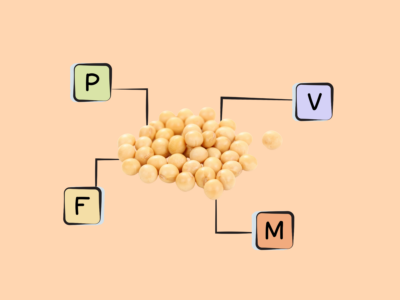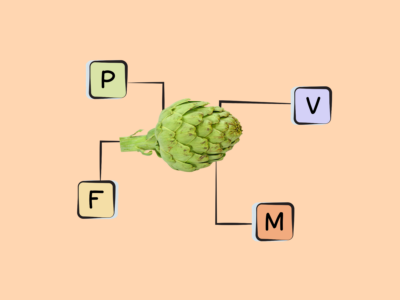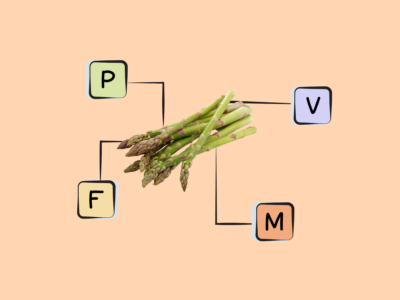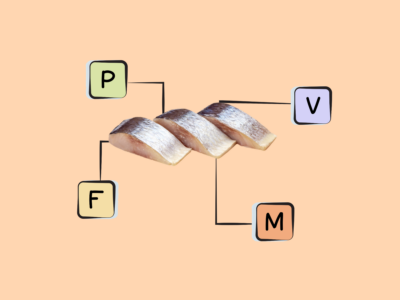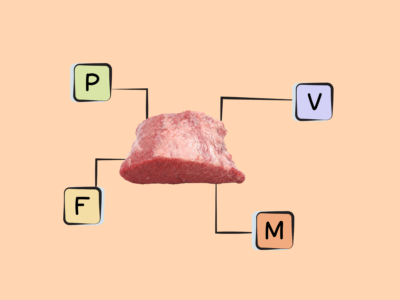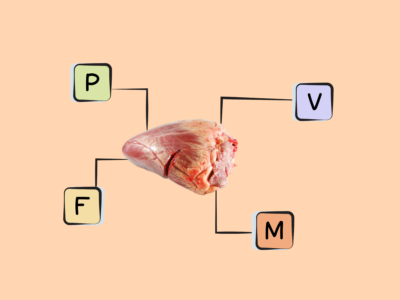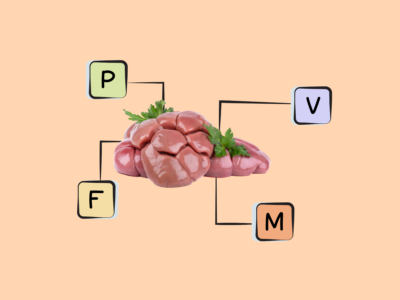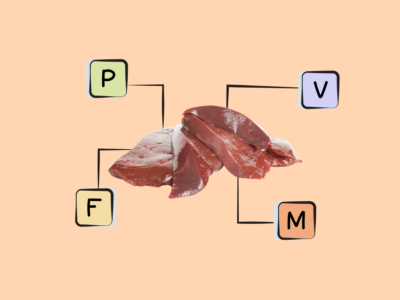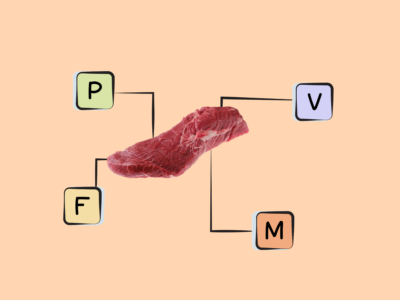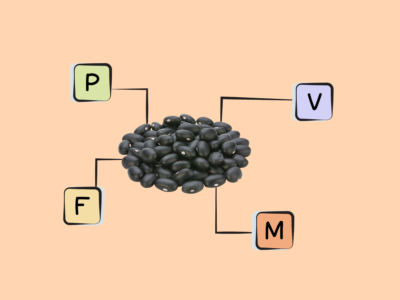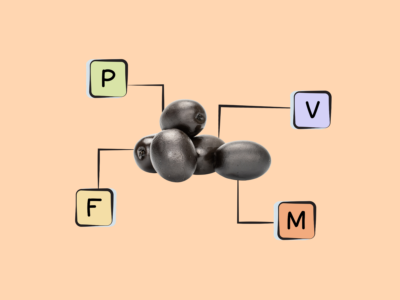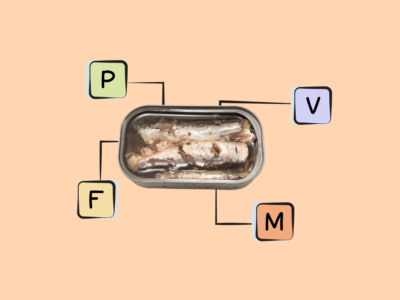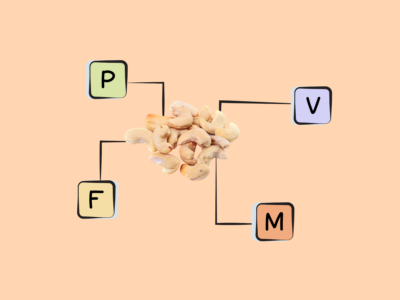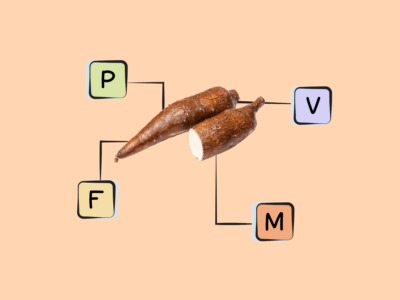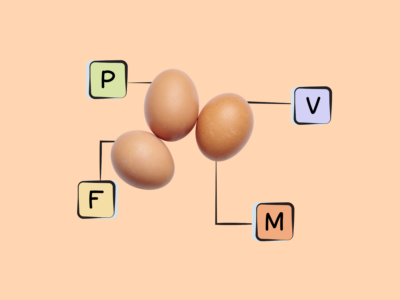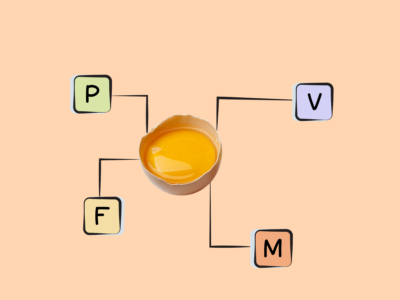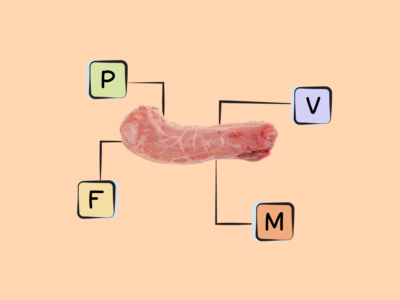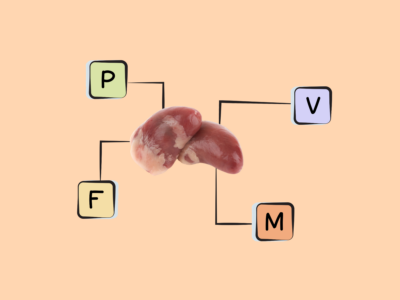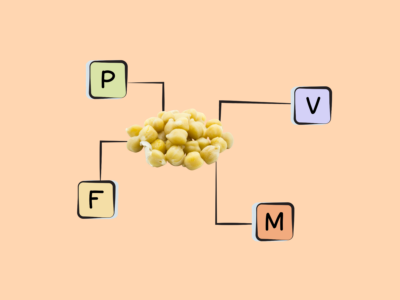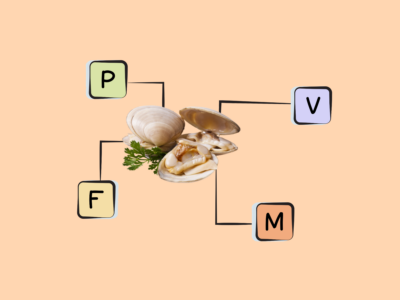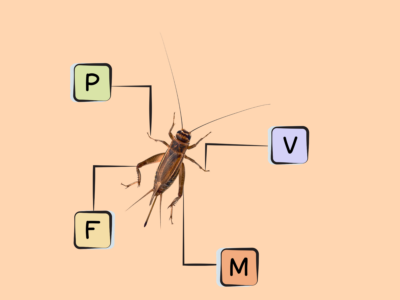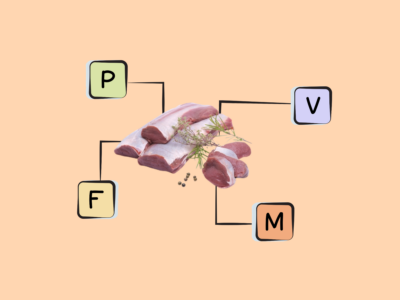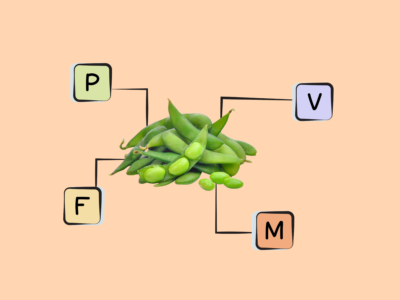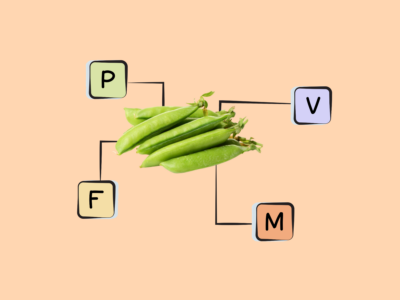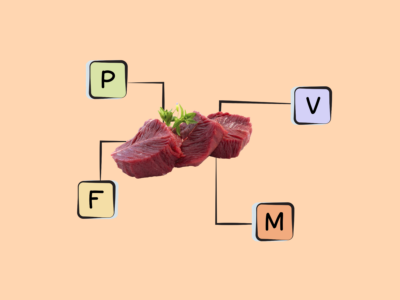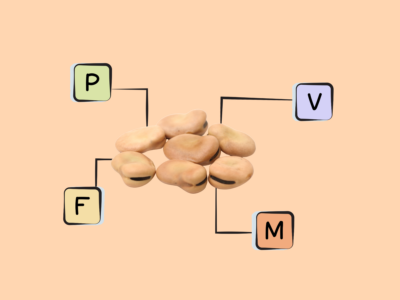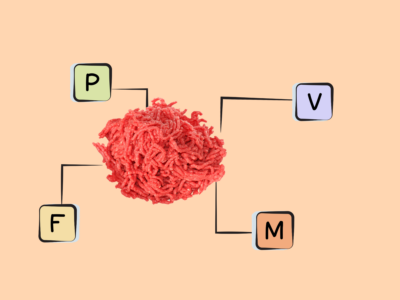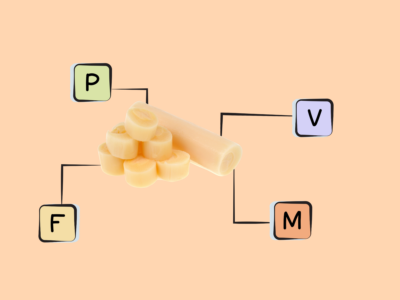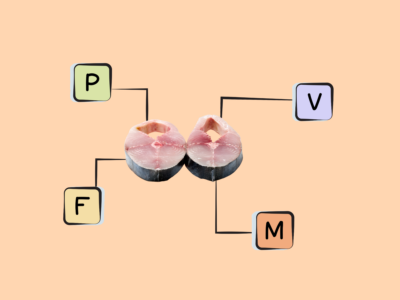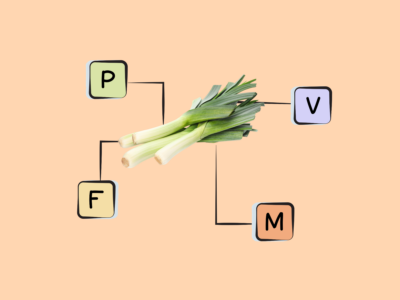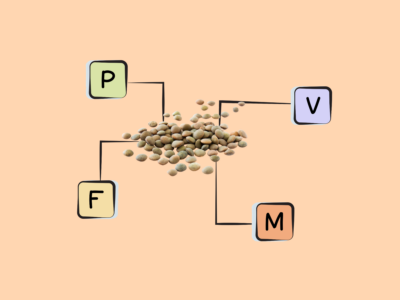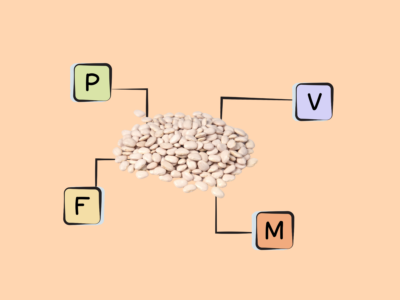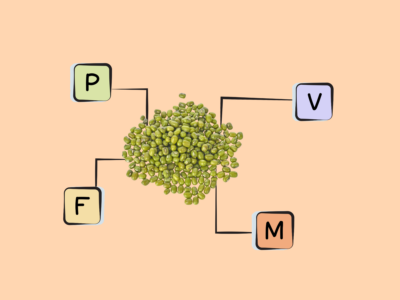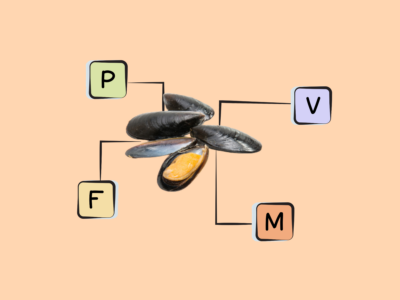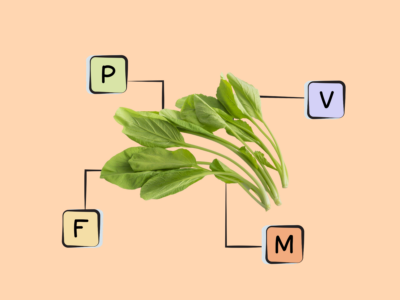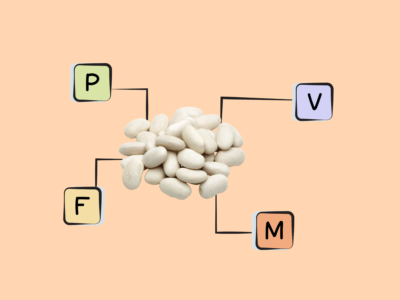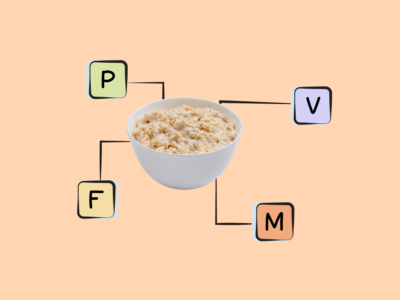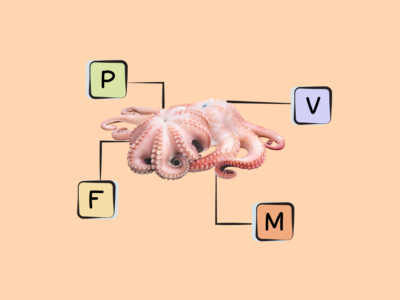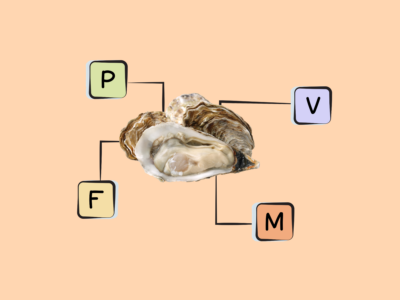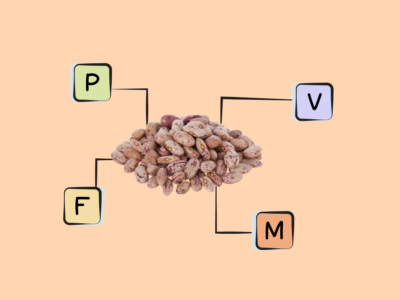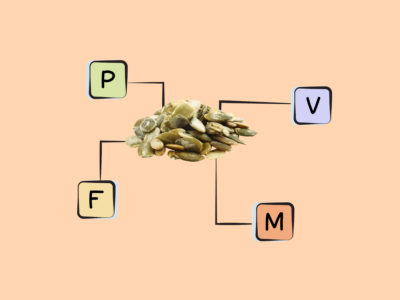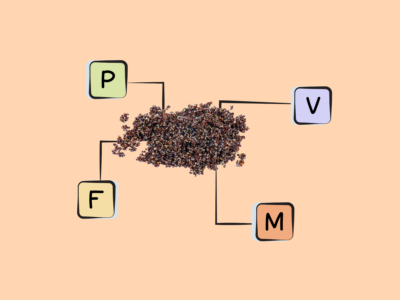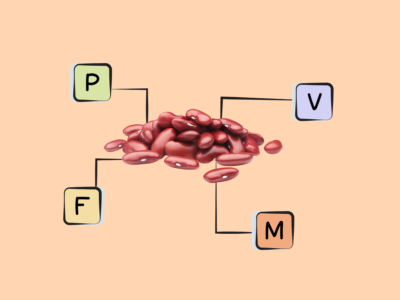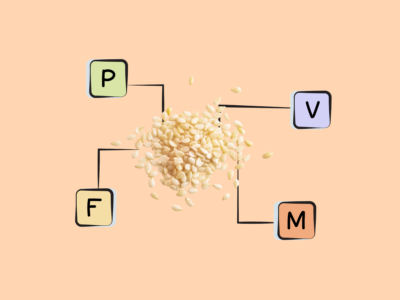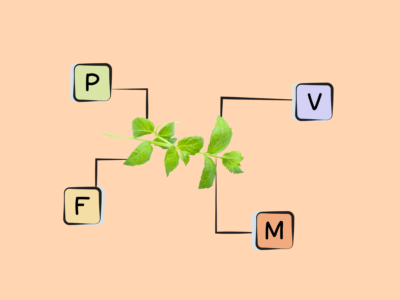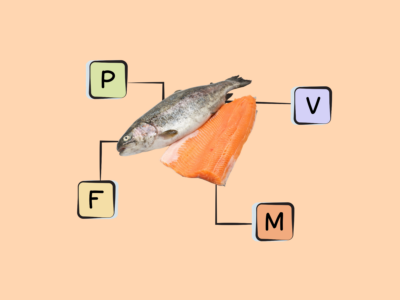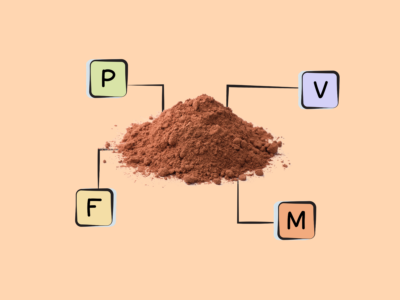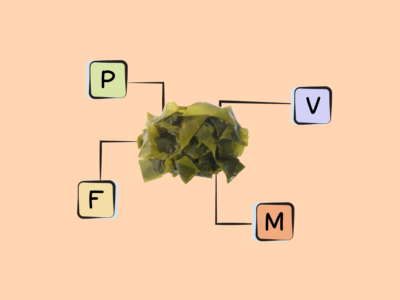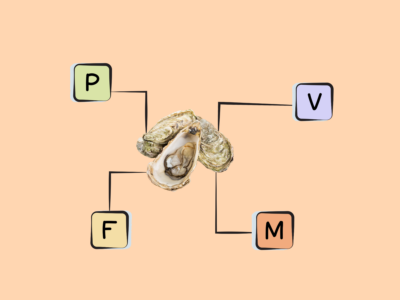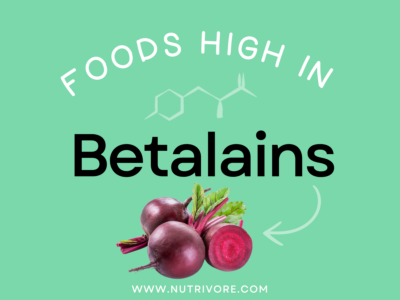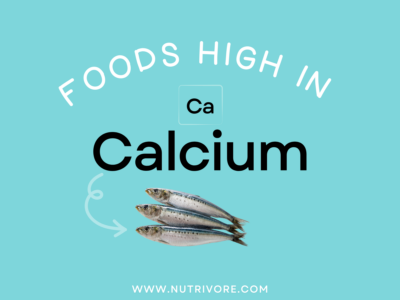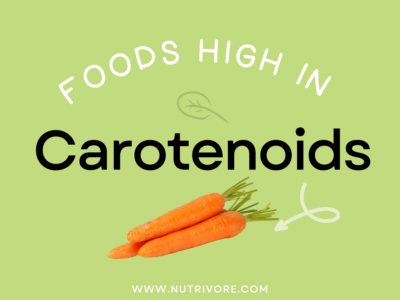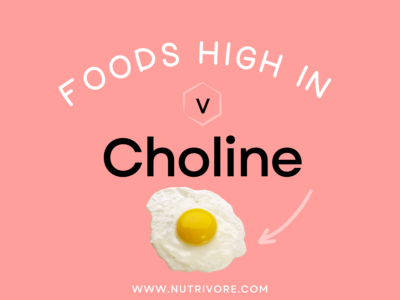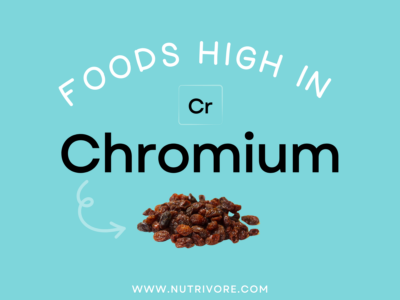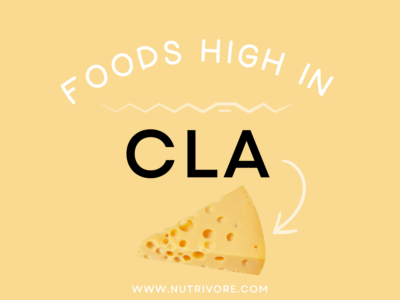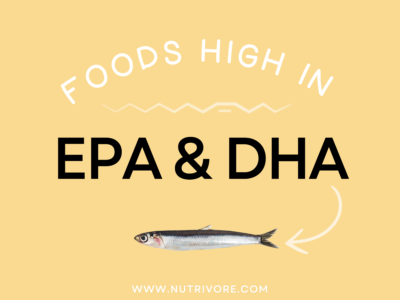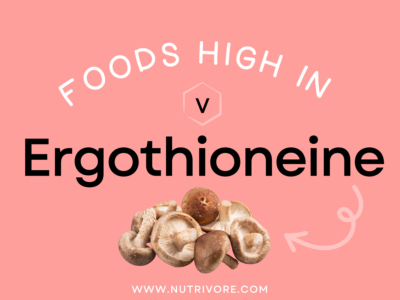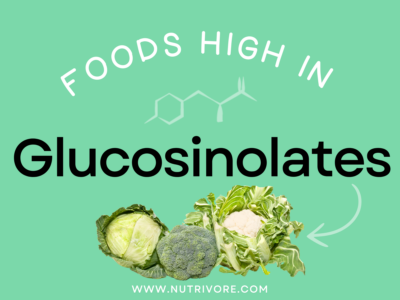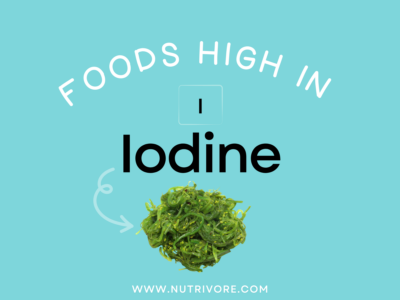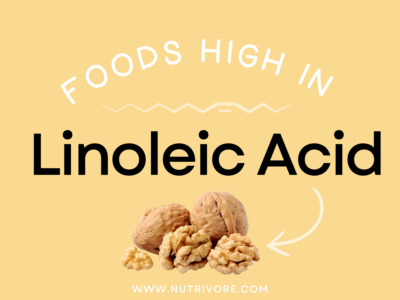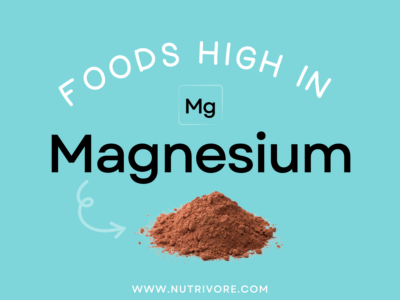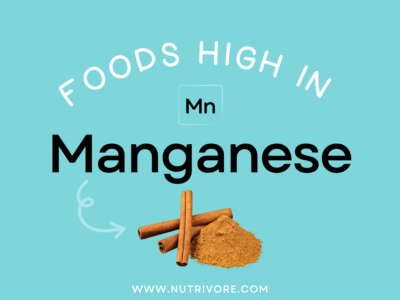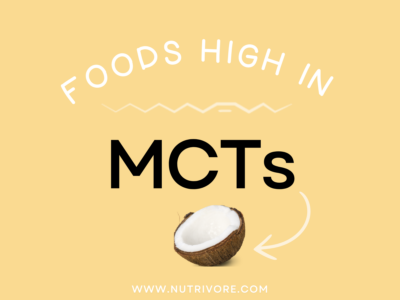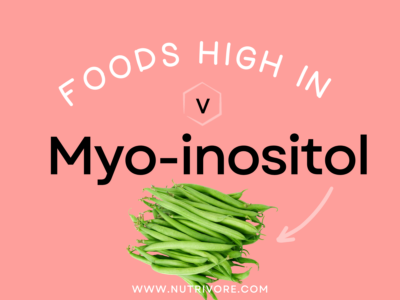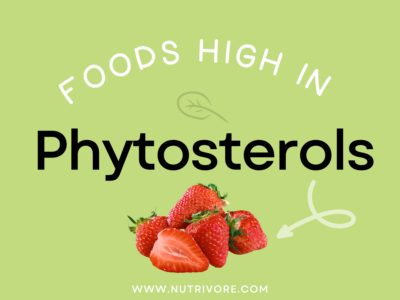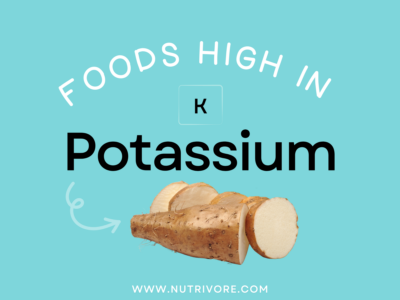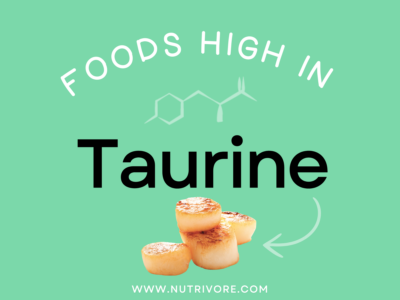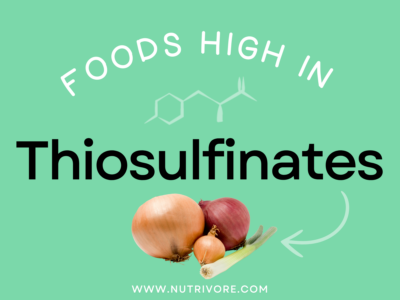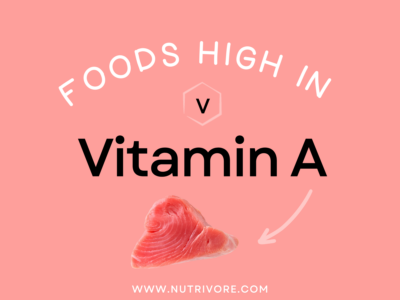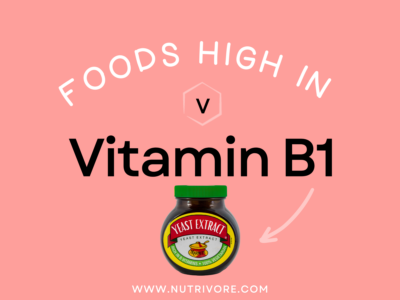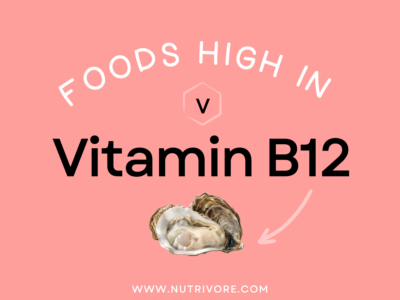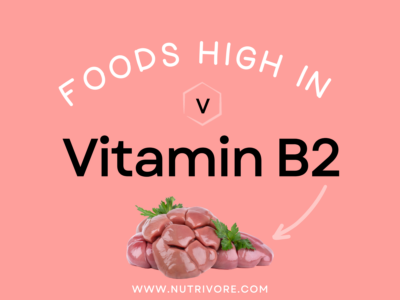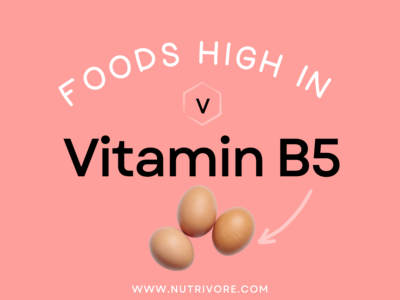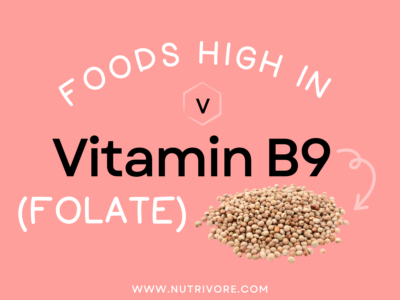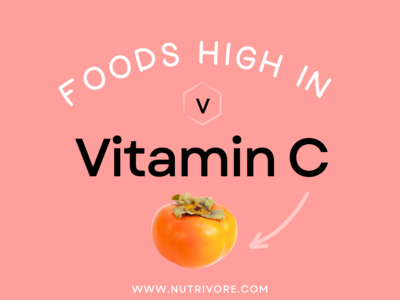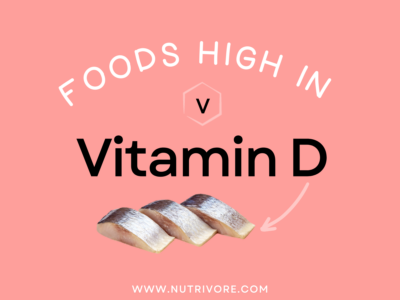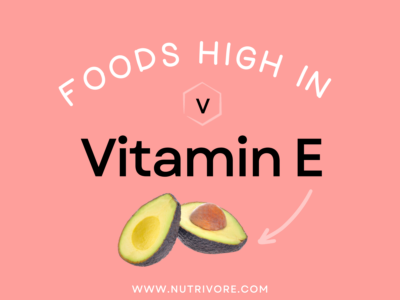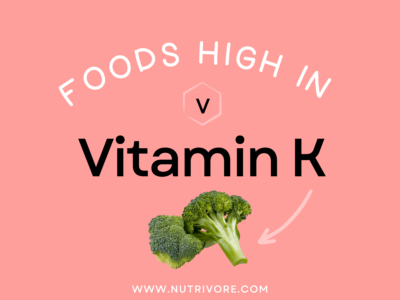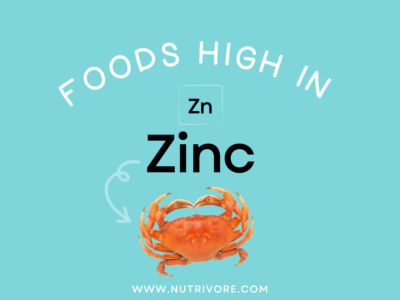Table of Contents[Hide][Show]
Top 5 Common Food Sources of Iron
Looking to meet your iron needs from your diet? Look no further! My team and I have crunched the numbers and did all the math to determine the top 5 common food sources of iron, per serving. Getting iron from our diet through healthy eating is important since a large collection of studies show that getting nutrients from dietary supplements doesn’t improve health outcomes compared to getting nutrients from foods!
| Rank | Food | Nutrivore Score | Serving Size (Raw) | Iron (mg/serving) | % Daily Value |
|---|---|---|---|---|---|
| 1 | Soybeans, Mature Seeds | 326 | 1/2 cup | 14.6 | 81 |
| 2 | Liver, Average1 | 4192 | 3.5 oz / 100 g | 13.4 | 74 |
| 3 | Coconut Milk or Cream2 | 175 | 1 cup | 6.5 | 36 |
| 4 | Octopus, Common | 1618 | 4 oz / 115 g | 6.1 | 34 |
| 5 | Oysters, Average3 | 2759 | 4 oz / 115 g | 5.9 | 33 |
2Coconut milk or cream is an average of canned coconut milk and coconut cream.
3Oysters, average includes Eastern (farmed and wild) and Pacific oysters.
Want to know more about this important mineral including what iron does in the body, how many mg of iron we need, what happens if we have low iron levels or if we get too much, and even more awesome food sources of iron? Keep reading to learn all there is to know!
Learn What Foods Are the Best Sources of Every Nutrient

The Top 25 Foods for Every Nutrient
The Top 25 Foods for Every Nutrient e-book is a well-organized, easy-to-use, grocery store-friendly guide to help you choose foods that fit your needs of 43 important nutrients while creating a balanced nutrient-dense diet.
Get two “Top 25” food lists for each nutrient, plus you’ll find RDA charts for everyone, informative visuals, fun facts, serving sizes and the 58 foods that are Nutrient Super Stars!
Buy now for instant digital access.
What Is Iron and What Does It Do?
Iron is an essential mineral that all living organisms require for metabolism. In foods, it’s present either in the form of heme (an iron-containing precursor to hemoglobin) or non-heme (the form predominant in plant foods and dairy). It’s needed for the functioning of numerous proteins involved in energy metabolism, electron transport, DNA replication and repair, free radical scavenging, oxidation, and oxygen transport and storage!
Iron plays an important role in reproductive health, central nervous system development, healthy gestation, and immunity. Both too much and too little iron are associated with health issues: excess free iron (often a result of inherited iron storage disorders) can cause cellular damage, oxidative stress, organ damage, and an increased risk of cancer and heart disease. Meanwhile, too little can lead to iron deficiency anemia—causing symptoms like fatigue, heart palpitations, and impaired thyroid function.
Learn more about iron here.
Iron Deficiency
Iron deficiency is the most widespread nutrient deficiency in the world, affecting up to 2 billion people globally! A 2011 study evaluated American’s usual nutrient intake including nutrients that are naturally-occurring in foods, from fortified and enriched foods, and from supplements. The results indicated that 23.1% of American adults usual diet falls short of the Estimated Average Requirement (EAR) for iron intake.

Groups At Risk
Those at risk of iron deficiency include:
- Children and adolescents
- Frequent blood donors
- Menstruating or pregnant individuals (nearly 1 in 5 pregnant people are iron deficient)
- Individuals experiencing chronic blood loss, often from gastrointestinal bleeding due to numerous reasons including parasite infection, peptic ulcers, gastrointestinal tumors, hiatal hernia, diverticulosis, chronic kidney disease, and even heavy endurance exercise
- Individuals with impaired absorption of iron including those with celiac disease, atrophic gastritis, or inflammatory bowel diseases
- Vegetarians and vegans (due to the lower bioavailability of plant-based iron sources)
- Individuals with chronic inflammation as seen in cancer, critical illness, chronic infection, or other inflammatory disorders
Learn more here.
Symptoms of Deficiency
Early stage iron deficiency (when iron stores are low but the functional supply is still sufficient) initially shows no obvious symptoms, but as it progresses to anemia, it can cause fatigue, rapid heart rate, and difficulty breathing. Reduced hemoglobin and myoglobin levels impair oxygen delivery, lowering physical performance and affecting thyroid function. Iron deficiency can also cause brittle nails, mouth sores, and, in severe cases, difficulty swallowing. For young children, iron deficiency is linked to cognitive and behavioral issues, while in pregnant women, it can lead to shorter gestation and low birth-weight newborns.
Learn more here.
Problems From Too Much Iron
While iron is essential, excess iron can lead to serious health issues, especially for individuals with genetic disorders like hereditary hemochromatosis, which causes iron to accumulate in vital organs, increasing the risk of liver disease, heart issues, and diabetes. Other genetic and acquired conditions, such as beta-thalassemia and sideroblastic anemia, impacting hemoglobin and red blood cells, also result in iron overload. Even without these conditions, high iron intake, particularly heme iron, has been linked to a higher risk of heart disease. Acute iron toxicity, often from accidental overdose, can cause severe symptoms and even be fatal, especially in young children.
Learn more here.
How Much Iron Do We Need?
The following table summarizes the current recommended amounts of iron, based on age, gender, or situation. Because vegetarian and vegan diets predominantly contain the less bioavailable type of iron (nonheme) found in plant-based foods, it’s recommended that people who don’t eat meat aim for about 1.8 times the normal iron RDA.
It’s also important to note that iron has some interactions with other nutrients including vitamin A, copper, zinc, and vitamin C. Learn more here.
| 0 – 6 months | |||||
| 6 months to < 12 months | |||||
| 1 yr – 3 yrs | |||||
| 4 yrs – 8 yrs | |||||
| 9 yrs – 13 yrs | |||||
| 14 yrs – 18 yrs | |||||
| 19 yrs – 50 yrs | |||||
| 51+ yrs | |||||
| Pregnant (14 – 18 yrs) | |||||
| Pregnant (19 – 30 yrs) | |||||
| Pregnant (31 – 50 yrs) | |||||
| Lactating (14 – 18 yrs) | |||||
| Lactating (19 – 30 yrs) | |||||
| Lactating (31 – 50 yrs) |
Nutrient Daily Values
Nutrition requirements and recommended nutrient intake for infants, children, adolescents, adults, mature adults, and pregnant and lactating individuals.
More Food Sources of Iron
Food can contain one of two forms of iron: iron as a component of heme (a precursor to hemoglobin) or nonheme iron (the predominant form in plant foods and dairy, although it’s also present in meat).
Heme iron is significantly more bioavailable than nonheme iron. In fact, only about 2 – 20% of nonheme iron is absorbed, although the actual amount depends on a variety of factors. For example, vitamin C strongly enhances nonheme iron absorption, as do fermented foods and alcohol. A peptide in meat—called the meat-fish-poultry-factor—enhances the absorption of any nonheme iron present in the meal, while phytic acid (such as from grains, legumes, nuts, and seeds) and polyphenols (such as from tea, coffee or dark chocolate) can bind to nonheme iron, forming insoluble complexes that can’t enter intestinal cells. And, while meat contains both heme and nonheme iron, its heme iron can get converted to nonheme during extended high-temperature cooking, reducing its bioavailability!
Heme iron-rich foods include liver, red meat, and some shellfish (especially oysters, mussels, and clams). The best sources of iron in its non-heme form include plant sources such as dark leafy greens, legumes (such as lentils, kidney beans, peas, white beans, and chickpeas), dried fruits such as apricots and raisins, and blackstrap molasses. And, some foods that normally have a low iron content are commercially iron-fortified, such as breakfast cereals and whole grains.
Best Food Sources of Iron
The following foods have high concentrations of dietary iron, containing at least 50% of the recommended dietary allowance per serving, making them our best food sources of this valuable mineral!
Good Food Sources of Iron
The following foods are also excellent or good sources of iron, containing at least 10% (and up to 50%) of the daily value per serving.
Top 5 Common Food Sources
If you’re looking for top 5 common food sources of other important nutrients check out these posts!
cITATIONS
Expand to see all scientific references for this article.
Anderson GJ, Darshan D, Wilkins SJ, Frazer DM. Regulation of systemic iron homeostasis: how the body responds to changes in iron demand. Biometals. 2007 Jun;20(3-4):665-74. doi: 10.1007/s10534-006-9030-2.
Ani M, Moshtaghie AA. The effect of chromium on parameters related to iron metabolism. Biol Trace Elem Res. 1992 Jan-Mar;32:57-64. doi: 10.1007/BF02784588.
Beard JL. Iron biology in immune function, muscle metabolism and neuronal functioning. J Nutr. 2001 Feb;131(2S-2):568S-579S; discussion 580S. doi: 10.1093/jn/131.2.568S.
Falkingham M, Abdelhamid A, Curtis P, Fairweather-Tait S, Dye L, Hooper L. The effects of oral iron supplementation on cognition in older children and adults: a systematic review and meta-analysis. Nutr J. 2010 Jan 25;9:4. doi: 10.1186/1475-2891-9-4.
Fleming MD. The regulation of hepcidin and its effects on systemic and cellular iron metabolism. Hematology Am Soc Hematol Educ Program. 2008:151-8. doi: 10.1182/asheducation-2008.1.151.
Fulgoni VL 3rd, Keast DR, Bailey RL, Dwyer J. Foods, fortificants, and supplements: Where do Americans get their nutrients? J Nutr. 2011 Oct;141(10):1847-54. doi: 10.3945/jn.111.142257. Epub 2011 Aug 24. PMID: 21865568; PMCID: PMC3174857.
Garofalo V, Condorelli RA, Cannarella R, Aversa A, Calogero AE, La Vignera S. Relationship between Iron Deficiency and Thyroid Function: A Systematic Review and Meta-Analysis. Nutrients. 2023 Nov 15;15(22):4790. doi: 10.3390/nu15224790.
Gupta PM, Perrine CG, Mei Z, Scanlon KS. Iron, Anemia, and Iron Deficiency Anemia among Young Children in the United States. Nutrients. 2016 May 30;8(6):330. doi: 10.3390/nu8060330.
Gür-Özmen S, Karahan-Özcan R. Iron Deficiency Anemia Is Associated with Menstrual Migraine: A Case-Control Study. Pain Med. 2016 Mar;17(3):596-605. doi: 10.1093/pm/pnv029.
Hershko C, Skikne B. Pathogenesis and management of iron deficiency anemia: emerging role of celiac disease, helicobacter pylori, and autoimmune gastritis. Semin Hematol. 2009 Oct;46(4):339-50. doi: 10.1053/j.seminhematol.2009.06.002.
Hess SY. The impact of common micronutrient deficiencies on iodine and thyroid metabolism: the evidence from human studies. Best Pract Res Clin Endocrinol Metab. 2010 Feb;24(1):117-32. doi: 10.1016/j.beem.2009.08.012.
Houston BL, Hurrie D, Graham J, Perija B, Rimmer E, Rabbani R, Bernstein CN, Turgeon AF, Fergusson DA, Houston DS, Abou-Setta AM, Zarychanski R. Efficacy of iron supplementation on fatigue and physical capacity in non-anaemic iron-deficient adults: a systematic review of randomised controlled trials. BMJ Open. 2018 Apr 5;8(4):e019240. doi: 10.1136/bmjopen-2017-019240.
Hurrell R, Egli I. Iron bioavailability and dietary reference values. Am J Clin Nutr. 2010 May;91(5):1461S-1467S. doi: 10.3945/ajcn.2010.28674F.
Jáuregui-Lobera I. Iron deficiency and cognitive functions. Neuropsychiatr Dis Treat. 2014 Nov 10;10:2087-95. doi: 10.2147/NDT.S72491.
Kapoor MP, Sugita M, Kawaguchi M, Timm D, Kawamura A, Abe A, Okubo T. Influence of iron supplementation on fatigue, mood states and sweating profiles of healthy non-anemic athletes during a training exercise: A double-blind, randomized, placebo-controlled, parallel-group study. Contemp Clin Trials Commun. 2023 Feb 3;32:101084. doi: 10.1016/j.conctc.2023.101084.
Khatiwada S, Gelal B, Baral N, Lamsal M. Association between iron status and thyroid function in Nepalese children. Thyroid Res. 2016 Jan 27;9:2. doi: 10.1186/s13044-016-0031-0.
Leung W, Singh I, McWilliams S, Stockler S, Ipsiroglu OS. Iron deficiency and sleep – A scoping review. Sleep Med Rev. 2020 Jun;51:101274. doi: 10.1016/j.smrv.2020.101274.
Lin CS, Chan LY, Wang JH, Chang CH. Diagnosis and treatment of female alopecia: Focusing on the iron deficiency-related alopecia. Tzu Chi Med J. 2023 Aug 22;35(4):322-328. doi: 10.4103/tcmj.tcmj_95_23.
Liu J, Pu C, Lang L, Qiao L, Abdullahi MA, Jiang C. Molecular pathogenesis of hereditary hemochromatosis. Histol Histopathol. 2016 Aug;31(8):833-40. doi: 10.14670/HH-11-762.
Luo J, Wang X, Yuan L, Guo L. Iron Deficiency, a Risk Factor of Thyroid Disorders in Reproductive-Age and Pregnant Women: A Systematic Review and Meta-Analysis. Front Endocrinol (Lausanne). 2021 Feb 25;12:629831. doi: 10.3389/fendo.2021.629831.
Lynch SR. Interaction of iron with other nutrients. Nutr Rev. 1997 Apr;55(4):102-10. doi: 10.1111/j.1753-4887.1997.tb06461.x.
Macher S, Herster C, Holter M, Moritz M, Matzhold EM, Stojakovic T, Pieber TR, Schlenke P, Drexler C, Amrein K. The Effect of Parenteral or Oral Iron Supplementation on Fatigue, Sleep, Quality of Life and Restless Legs Syndrome in Iron-Deficient Blood Donors: A Secondary Analysis of the IronWoMan RCT. Nutrients. 2020 May 5;12(5):1313. doi: 10.3390/nu12051313.
Meng SH, Zhou HB, Li X, Wang MX, Kang LX, Fu JM, Li X, Li XT, Zhao YS. Association Between Dietary Iron Intake and Serum Ferritin and Severe Headache or Migraine. Front Nutr. 2021 Jul 6;8:685564. doi: 10.3389/fnut.2021.685564.
Miller EM. Iron status and reproduction in US women: National Health and Nutrition Examination Survey, 1999-2006. PLoS One. 2014 Nov 6;9(11):e112216. doi: 10.1371/journal.pone.0112216.
Murat S, Ali U, Serdal K, Süleyman D, İlknur P, Mehmet S, Bahattin A, Tunahan U. Assessment of subjective sleep quality in iron deficiency anaemia. Afr Health Sci. 2015 Jun;15(2):621-7. doi: 10.4314/ahs.v15i2.40.
Neumann SN, Li JJ, Yuan XD, Chen SH, Ma CR, Murray-Kolb LE, Shen Y, Wu SL, Gao X. Anemia and insomnia: a cross-sectional study and meta-analysis. Chin Med J (Engl). 2020 Dec 21;134(6):675-681. doi: 10.1097/CM9.0000000000001306.
Oppenheimer SJ. Iron and its relation to immunity and infectious disease. J Nutr. 2001 Feb;131(2S-2):616S-633S; discussion 633S-635S. doi: 10.1093/jn/131.2.616S.
Pamuk GE, Top MŞ, Uyanık MŞ, Köker H, Akker M, Ak R, Yürekli ÖA, Çelik Y. Is iron-deficiency anemia associated with migraine? Is there a role for anxiety and depression? Wien Klin Wochenschr. 2016 Dec;128(Suppl 8):576-580. doi: 10.1007/s00508-015-0740-8.
Park SY, Na SY, Kim JH, Cho S, Lee JH. Iron plays a certain role in patterned hair loss. J Korean Med Sci. 2013 Jun;28(6):934-8. doi: 10.3346/jkms.2013.28.6.934.
Radtke H, Tegtmeier J, Röcker L, Salama A, Kiesewetter H. Daily doses of 20 mg of elemental iron compensate for iron loss in regular blood donors: a randomized, double-blind, placebo-controlled study. Transfusion. 2004 Oct;44(10):1427-32. doi: 10.1111/j.1537-2995.2004.04074.x.
Recommendations to prevent and control iron deficiency in the United States. Centers for Disease Control and Prevention. MMWR Recomm Rep. 1998 Apr 3;47(RR-3):1-29.
Reddy K V, Shastry S, Raturi M, Baliga B P. Impact of Regular Whole-Blood Donation on Body Iron Stores. Transfus Med Hemother. 2020 Feb;47(1):75-79. doi: 10.1159/000499768.
Rossander-Hultén L, Brune M, Sandström B, Lönnerdal B, Hallberg L. Competitive inhibition of iron absorption by manganese and zinc in humans. Am J Clin Nutr. 1991 Jul;54(1):152-6. doi: 10.1093/ajcn/54.1.152.
Suharno D, West CE, Muhilal, Karyadi D, Hautvast JG. Supplementation with vitamin A and iron for nutritional anaemia in pregnant women in West Java, Indonesia. Lancet. 1993 Nov 27;342(8883):1325-8. doi: 10.1016/0140-6736(93)92246-p.
Swaminathan S, Fonseca VA, Alam MG, Shah SV. The role of iron in diabetes and its complications. Diabetes Care. 2007 Jul;30(7):1926-33. doi: 10.2337/dc06-2625.
Tayyebi A, Poursadeghfard M, Nazeri M, Pousadeghfard T. Is There Any Correlation between Migraine Attacks and Iron Deficiency Anemia? A Case-Control Study. Int J Hematol Oncol Stem Cell Res. 2019 Jul 1;13(3):164-171.
Treister-Goltzman Y, Yarza S, Peleg R. Iron Deficiency and Nonscarring Alopecia in Women: Systematic Review and Meta-Analysis. Skin Appendage Disord. 2022 Mar;8(2):83-92. doi: 10.1159/000519952.
Trotti LM, Bhadriraju S, Becker LA. Iron for restless legs syndrome. Cochrane Database Syst Rev. 2012 May 16;5(5):CD007834. doi: 10.1002/14651858.CD007834.pub2. Update in: Cochrane Database Syst Rev. 2019 Jan 04;1:CD007834.
Vaucher P, Druais PL, Waldvogel S, Favrat B. Effect of iron supplementation on fatigue in nonanemic menstruating women with low ferritin: a randomized controlled trial. CMAJ. 2012 Aug 7;184(11):1247-54. doi: 10.1503/cmaj.110950.
von Haehling S, Jankowska EA, van Veldhuisen DJ, Ponikowski P, Anker SD. Iron deficiency and cardiovascular disease. Nat Rev Cardiol. 2015 Nov;12(11):659-69. doi: 10.1038/nrcardio.2015.109.
Wang M. Iron Deficiency and Other Types of Anemia in Infants and Children. Am Fam Physician. 2016 Feb 15;93(4):270-8.
Winter WE, Bazydlo LA, Harris NS. The molecular biology of human iron metabolism. Lab Med. 2014 Spring;45(2):92-102. doi: 10.1309/lmf28s2gimxnwhmm.
Yang W, Li B, Dong X, Zhang XQ, Zeng Y, Zhou JL, Tang YH, Xu JJ. Is heme iron intake associated with risk of coronary heart disease? A meta-analysis of prospective studies. Eur J Nutr. 2014;53(2):395-400. doi: 10.1007/s00394-013-0535-5.
Zečkanović A, Kavčič M, Prelog T, Šmid A, Jazbec J. Micronized, Microencapsulated Ferric Iron Supplementation in the Form of >Your< Iron Syrup Improves Hemoglobin and Ferritin Levels in Iron-Deficient Children: Double-Blind, Randomized Clinical Study of Efficacy and Safety. Nutrients. 2021 Mar 26;13(4):1087. doi: 10.3390/nu13041087.
Zhang C. Essential functions of iron-requiring proteins in DNA replication, repair and cell cycle control. Protein Cell. 2014 Oct;5(10):750-60. doi: 10.1007/s13238-014-0083-7.




